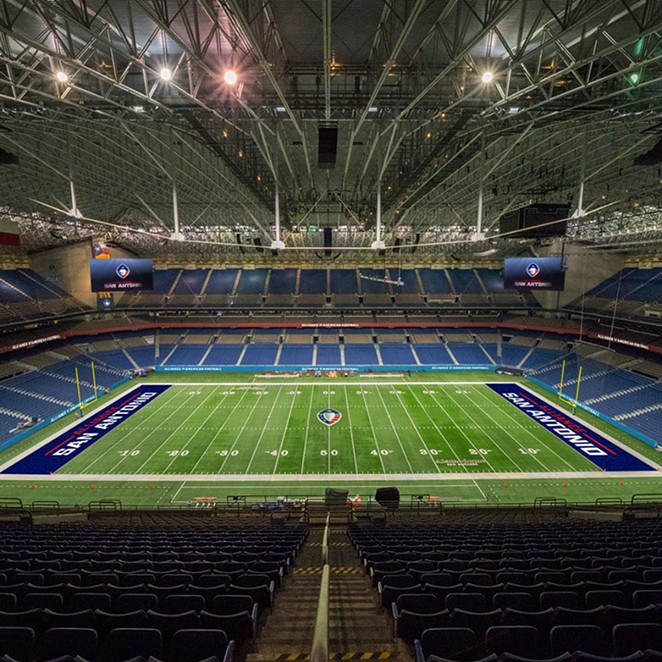Now we’re about to see if the Alliance of American Football is just so much more gridiron fairy dust. The spring league, helmed by Charlie Ebersol, the son of XFL exec and TV producer Dick Ebersol, is launching next year with the Alamo City as one of its first eight markets.
Even though the fledgling AAF rolls into town with some deep-pocketed investors, it does so at a time when football fans already have access to more broadcast NFL games than any point in history – yet its ratings are falling. And thanks to head injuries and lawsuits, there are real questions whether tackle football as a professional sport still has long-term prospects.
“Even in normal circumstances, it’s really difficult to start a league,” said David Berri, a professor of sports economics at Southern Utah University. “It’s something that takes decades. It’s not something that’s going to happen in 5 to 10 years.”
Compounding the problem, the AAF’s owners will need to flex some Dwayne Johnson-level marketing muscle to get audiences excited over a league where players are basically the college-team leftovers who couldn’t get picked up by the NFL.
“You’re recruiting second-tier players onto a team nobody knows anything about to play in a league nobody knows anything about,” Berri said.
Losing Record
San Antonio’s seen its share of football failures — groups who faced that challenge and came up short, either from lack of funding or bad business moves. Since the mid-‘70s, it’s hosted the World Football League, the United States Football League, the Canadian Football League and the XFL, to name just a few.
But Mayor Ron Nirenberg, who played a role in luring the league here, thinks this time may be different. With an emphasis, of course, on the may.
“I’ve also seen the corpses of leagues piled up over our history,” he said. “But this one does have a degree of credibility the others lacked.”
For one thing, AAF has a television deal with CBS, Nirenberg points out, and Ebersol’s involvement is another shot of clout. What’s more, it boasts management and coaching ties to the NFL. And the local franchise has a coach and GM who were on teams people may have heard of. (The San Diego Chargers and Dallas Cowboys for those keeping score at home.)
The AAF’s deal includes a three-year lease to play in the Alamodome, but the city hasn’t yet released the final details of that agreement. Nirenberg, however, said the nitty gritty includes no tax breaks or incentives.
“This is absolutely high-risk, but it’s high-risk for the league, not for San Antonio,” he said.
Who Needs Who?
But even if fans eventually come around to the idea of yet another football league, it’s unclear whether the city’s demographics and economics will support it.
To fill stands, most start-up leagues give away free tickets like they’re blasting them out of a confetti cannon, but their ultimate survival depends on converting seat-warmers into fans willing to spend on season tickets. That could be a stretch in blue-collar S.A., where many sports enthusiasts already see the Spurs taking a deep bite of their paychecks.
Also key to a league’s survival is convincing the business community to drop big coin on sponsorship, box seats and the like. Again, San Antonio could come up a disappointment. Previous franchises have lamented the city’s shallow corporate bench.
“The reality is we are not now, nor have we ever been, a major corporate headquarters city,” said Heywood Sanders, a professor of public policy at the University of Texas at San Antonio. “I don’t see that changing.”
While the AAF’s odds don’t look good, Sanders said there’s at least a short-term upside for the San Antonio in having another big Alamodome lessee aside from UTSA football. But, he cautions, the city should negotiate aggressively to ensure it gets a worthwhile cut of concessions, parking fees and other potential moneymakers.
“The league, in many ways, needs San Antonio more than we need the league,”
he said.
Stay on top of San Antonio news and views. Sign up for our Weekly Headlines Newsletter.


